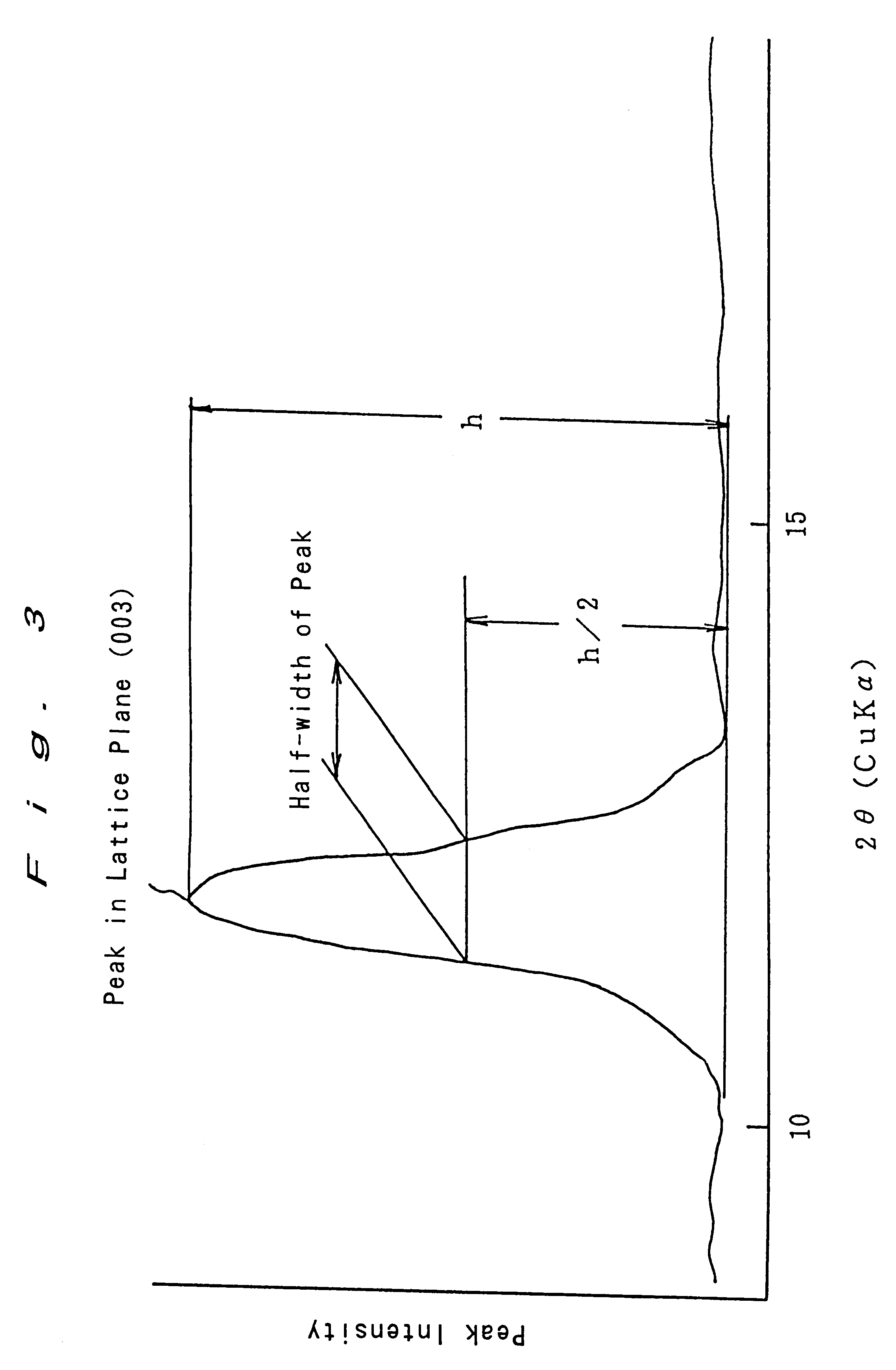Enclosed alkali storage battery
- Summary
- Abstract
- Description
- Claims
- Application Information
AI Technical Summary
Benefits of technology
Problems solved by technology
Method used
Image
Examples
experiment 1
(Experiment 1)
In this experiment, with regard to sealed alkaline storage batteries using zinc as a negative electrode active material and using, as a positive electrode active material, nickel oxyhydroxide including Mn as a solid-solution element, manganese dioxide, or a mixture of nickel oxide and manganese dioxide, the capacity retention ratios and the numbers of batteries suffering leakage were obtained at various charge-discharge cycles.
embodiment 1
(Embodiment 1)
[Preparation of Positive Electrode]
A nickel sulfate aqueous solution in a concentration of 0.1 mole / liter and a manganese sulfate aqueous solution in a concentration of 0.1 mole / liter were mixed in an atomic ratio between nickel and manganese of 4:1. Then, 100 ml of the thus obtained mixed aqueous solution and 100 ml of a 5 wt % ammonia aqueous solution were simultaneously poured into water contained in a bath, and the solution in the bath was mixed with the temperature kept at 35.degree. C. for 1 hour. Then, the solution in the bath was adjusted to pH 11 by adding dropwise a 20 wt % sodium hydroxide aqueous solution thereto with stirring, and the resultant solution was stirred for another 1 hour. During the stirring, the pH of the solution was monitored by using a pH meter with an automatic temperature compensating function, so that the pH of the solution could be constantly kept at 11.+-.0.3 by adding dropwise a 20 wt % sodium hydroxide aqueous solution every time th...
experiment 2
(Experiment 2)
In this experiment, the relationship between the .gamma. ratio and the leakage was examined.
Solutions for oxidation treatment were prepared by mixing 500 ml of a sodium hydroxide aqueous solution in a concentration of 10 mole / liter with 100 ml, 200 ml, 300 ml or 400 ml of a 10 wt % sodium hypochlorite aqueous solution with stirring and by heating the resultant solutions to 60.degree. C. Sealed alkaline storage batteries A, B, C and D were fabricated in the same manner as in Embodiment 1 except that these solutions for oxidation treatment were respectively used. These sealed alkaline storage batteries A through D were subjected to the charge-discharge cycle test under the same conditions as in Experiment 1, so as to obtain the number of batteries suffering leakage at the 5th, 10th, 25th and 50th cycles. The results are shown in Table 2. In Table 2, the results of the sealed alkaline storage battery a are transferred from Table 1.
As is shown in Table 2, with regard to th...
PUM
 Login to View More
Login to View More Abstract
Description
Claims
Application Information
 Login to View More
Login to View More - R&D
- Intellectual Property
- Life Sciences
- Materials
- Tech Scout
- Unparalleled Data Quality
- Higher Quality Content
- 60% Fewer Hallucinations
Browse by: Latest US Patents, China's latest patents, Technical Efficacy Thesaurus, Application Domain, Technology Topic, Popular Technical Reports.
© 2025 PatSnap. All rights reserved.Legal|Privacy policy|Modern Slavery Act Transparency Statement|Sitemap|About US| Contact US: help@patsnap.com



